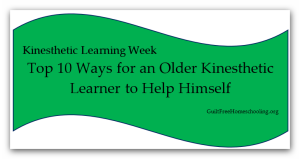 These tips will be helpful to active students in middle school, high school, college, or beyond, who need to motivate themselves and control their own learning environment. Some lessons are inherently kinesthetic; if the lesson has a kinesthetic component, do that first (don’t sit on an exercise ball while watching a video about running, when you can just go run). If you are struggling to find a kinesthetic application, try some of the following suggestions.
These tips will be helpful to active students in middle school, high school, college, or beyond, who need to motivate themselves and control their own learning environment. Some lessons are inherently kinesthetic; if the lesson has a kinesthetic component, do that first (don’t sit on an exercise ball while watching a video about running, when you can just go run). If you are struggling to find a kinesthetic application, try some of the following suggestions.
- Run, bike, rollerblade, etc. before attempting lessons, so your brain will be running full-throttle and ready to handle information. Take a break during lessons or studying and get some physical exercise to wake up your brain. Repeat as often (and as hard) as necessary.
- Stand, walk, pace, etc. to help you think through a tough problem. The exercise will keep your brain functioning fully and will provide another memory key.
- Do push-ups over your book, dumbbell curls, toss and catch a baseball, shoot a basket, etc. for every point or fact you review. The exercise will keep your brain functioning fully and will provide another memory key.
- Vary your body position and/or “seating” arrangement while reviewing material for a test. Lie back on pillows on your bed, lie on your stomach on the floor, sit cross-legged in the grass, climb up to the treehouse, etc. Use a swivel barstool or rocking chair or balance on an exercise ball or skateboard. The movements will keep your brain functioning fully and will provide another memory key.
- Make *BIG* flashcards (“TV-game-show” size) that require arm movements to hold and shuffle, not just hands; they can also use print large enough to be seen from a distance while using a stationary bike, treadmill, etc. Use heavy-weight cardstock, poster board, cereal-box cardboard, etc.
- Floorcloths! Use permanent markers to turn a discarded bed sheet or tablecloth into a very large, reusable diagram for graphing rectangular coordinates, plotting graphs, periodic table, skeletal anatomy, etc. Poker-chips or Post-It notes work well for marking points or labeling the diagram. Fold it up and store it away between uses!
- Use a white shower curtain liner and wet-erase markers as a large, reusable, floorcloth-style whiteboard. In some situations, this could also be attached to a large wall for a vertical writing surface.
- Consider alternative methods to written papers: video presentations, dramatic re-enactments, personal performances, etc.
- Stand at an easel with easel pad or paper roll to draw out graphs, diagrams, etc. for review or to re-write notes. The larger size and vertical orientation are both beneficial kinesthetic learning methods.
- Incorporate learning methods from the other 3 styles to improve your overall learning abilities.
For further help, visit these links:
Learning Styles v. It’s a Syndrome
“Kinesthetic Learning” topic (including all of this “Kinesthetic Learning Week” series)
“Learning Styles” topic

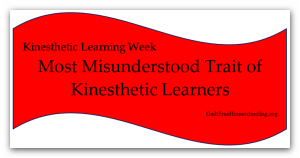
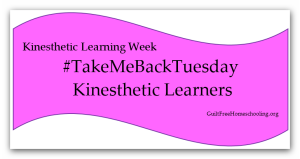
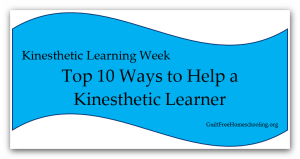
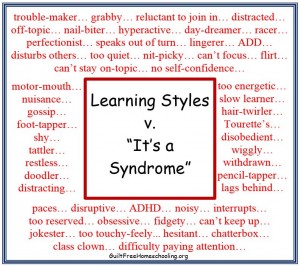



 Guilt-Free Homeschooling is the creation of Carolyn Morrison and her daughter, Jennifer Leonhard. After serious disappointments with public school, Carolyn spent the next 11 years homeschooling her two children, from elementary to high school graduation and college admission. Refusing to force new homeschooling families to re-invent the wheel, Carolyn and Jennifer now share their encouragement, support, tips, and tricks, filling their blog with "all the answers we were looking for as a new-to-homeschooling family" and making this website a valuable resource for parents, not just a daily journal. Guilt-Free Homeschooling -- Equipping Parents for Homeschooling Success!
Guilt-Free Homeschooling is the creation of Carolyn Morrison and her daughter, Jennifer Leonhard. After serious disappointments with public school, Carolyn spent the next 11 years homeschooling her two children, from elementary to high school graduation and college admission. Refusing to force new homeschooling families to re-invent the wheel, Carolyn and Jennifer now share their encouragement, support, tips, and tricks, filling their blog with "all the answers we were looking for as a new-to-homeschooling family" and making this website a valuable resource for parents, not just a daily journal. Guilt-Free Homeschooling -- Equipping Parents for Homeschooling Success!

Recent Comments